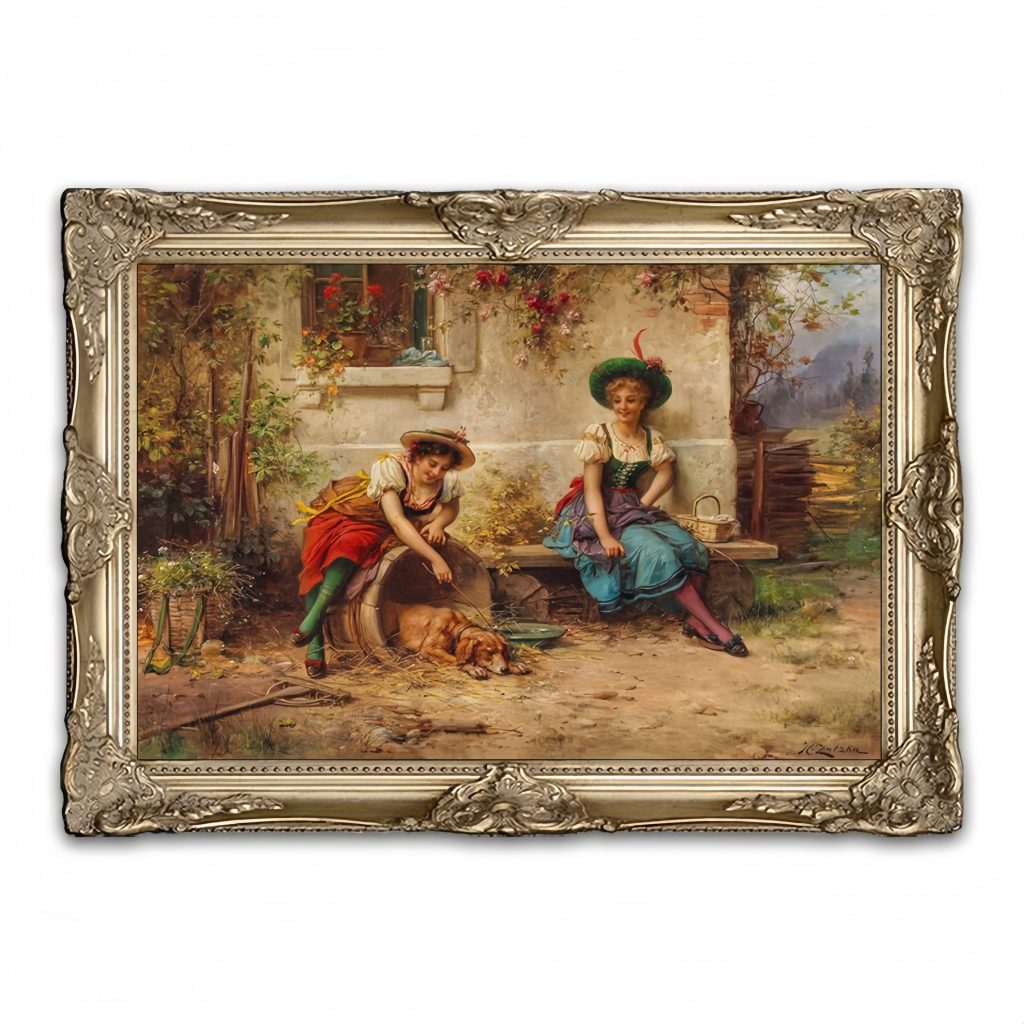Realistic hand-painted oil painting is an artistic expression form that adheres to the principle of being faithful to reality. The following is an interpretation from several aspects, including its origin and background, core features, expression techniques, representative works, and spiritual connotations:
Origin and Background
Realistic hand-painted oil paintings emerged in Europe in the 19th century. At that time, the Industrial Revolution brought about drastic social changes, and people were eager to truly reflect the current situation of life. Painters are no longer content with idealized and fictional expressions. Instead, they focus their attention on the daily lives of ordinary people, labor scenes, and various social contradictions, striving to present the real world through their paintings. Realistic painting was a breakthrough from the popular styles of the time such as Romanticism and Neoclassicism. It abandoned the excessive fantasy and exaggeration of Romanticism and also broke away from the overly idealistic, elegant and standardized model of Neoclassicism.
Core features
Authenticity: Pursuing a faithful reproduction of the real world, emphasizing precise depiction of details, and striving to achieve a sense of visual authenticity. Painters strive to capture and represent the true texture, light and shadow effects, and spatial relationships of objects.
Objectivity: Observe and present reality with an objective attitude, avoid subjective fabrication and exaggeration, strive to present the true nature of things, focus on the actual existence of the real world, rather than idealized or mythologized themes.
Sociality: Paying attention to social issues and people’s lives, often reflecting social injustice, poverty and the hardships of workers, and having a strong sense of social criticism.
Democracy: It advocates the democratization of art and holds that art should serve the general public rather than only a few nobles and the rich.
Expression techniques
Realism as the main focus: In terms of techniques, it is not bound by a single pattern, featuring both meticulous realistic skills and bold brushstrokes and color applications to meet different expression needs. According to the needs of the theme and emotion, painters flexibly employ various painting techniques, striving to depict the objective world truthfully.
Color and Light and Shadow: The application of color is of vital importance. Painters can use soft and natural tones to depict the simplicity and sincerity of the lives of the working masses, or they can reveal the contradictions and conflicts in society through bright and strongly contrasting colors. The effect of light and shadow is also an important means to represent reality. Painters can use the changes of light and shadow to create different atmospheres, thereby highlighting the joys and sorrows in real life.
Composition and modeling: Through reasonable composition and vivid modeling, painters can depict the living conditions, mental outlook and social phenomena of the working masses with great depth.
Representative figures and works
Gustav Courbet: His representative works include “The Quarteer” and “The Funeral of Ornan”, etc. Courbet was the first figure to promote realism into modern painting. In his works and manifestos, he established the principle of taking real life as the basis for creation and advocated art that reflected real life and the working people.
Jean-francois Millet: His representative works include “The Gleaners”, “The Evening Bell”, “The Shepherdess”, etc. Miller is hailed as a great peasant painter. Throughout his life, he created many works depicting rural landscapes and the lives of farmers. His painting style is simple and solemn, and the images he created are neat, lofty and full of commemorative value.
Honore Dumiere: His works include “The Third Class Carriage” and “Transsnoin Street”, etc. Dumiere was a painter of satirical art with a fighting spirit. He actively engaged in society, grasped the pulse of The Times, and created a large number of political satirical paintings, mocking ugliness and exposing social ills.
Ilya Repin: His representative work “Porters on the Volga” is a classic of realistic oil painting, vividly depicting the hard life and heavy labor of the porters.
Spiritual connotation
Realistic hand-painted oil paintings are not only works of art with aesthetic value, but also a mirror reflecting social reality. It enables viewers to feel the authenticity and vitality of real life and prompts people to think about life. During the creative process, painters often delve into life, experiencing the hardships and joys of the working masses, and thus infuse these sincere emotions into their works, making the paintings more infectious and persuasive. Meanwhile, realistic hand-painted oil paintings also convey care and sympathy for the working masses, evoking viewers’ reflection and concern for social reality.
